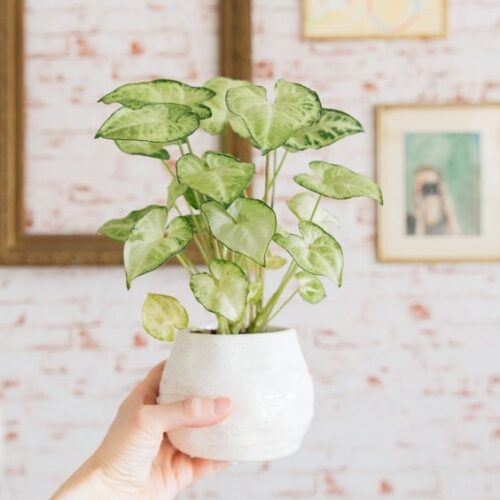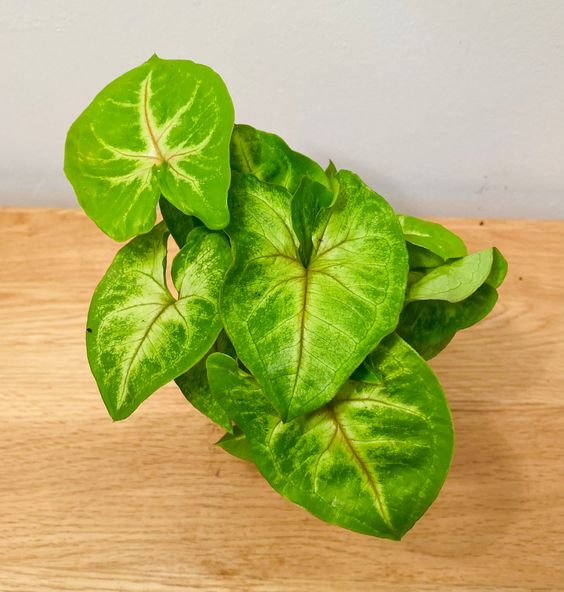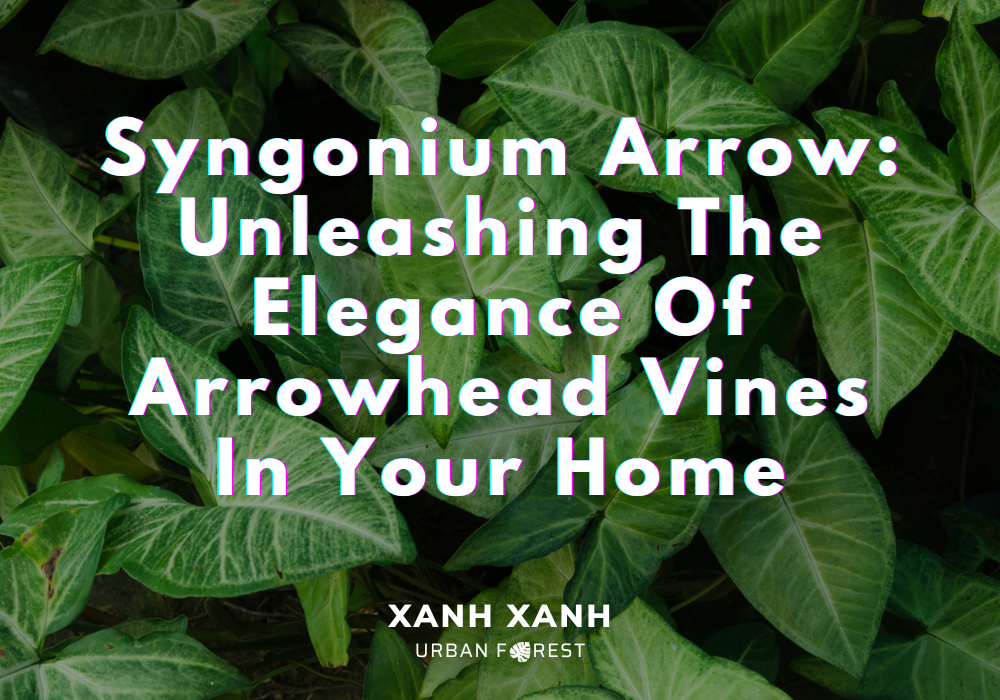Table of Contents
1. Introduction to Syngonium Arrow
Syngonium Arrow, scientifically known as Syngonium podophyllum, is a species of evergreen climbers native to tropical America. The allure of Syngonium Arrow lies in its stunning foliage. The arrow-shaped leaves exhibit various shades of green, often with attractive variegation patterns that add visual interest to any indoor setting. The leaves start small and gradually gain size and maturity as the plants grow and climb. This growth pattern mimics their natural habitat, where they emerge from shade and eventually reach full sun in the canopy of plants.

2. Popular Varieties of Syngonium Arrow
Syngonium Arrow offers a wide range of varieties, each with its distinctive leaf colors and patterns. Explore these well-known selections:

2.1. Syngonium podophyllum ‘White Butterfly’
This variety has creamy white foliage with green accents, resembling butterfly wings. It adds a touch of elegance and can be used as an indoor or outdoor plant in shaded areas.
2.2. Syngonium podophyllum ‘Pink Perfection’
‘Pink Allusion’ features spear-shaped leaves ranging from pale green to old pink, with darker green outlines. The pink veins enhance its beauty, making it a standout plant in any collection.


2.3. Syngonium podophyllum ‘Neon Robusta’
‘Neon Robusta’ is a stunning pink variety of the arrowhead vine. Its arrow-shaped leaves and vibrant coloration make it an eye-catching plant. It can be grown as a houseplant, vine, or terrarium plant.
2.4. Syngonium podophyllum ‘Maria Allusion’
This variety belongs to the Allusion Series, characterized by new leaves that are mostly pink and fade to green. The pink coloration is not as intense as in other varieties, and the veins may have a reddish hue. It thrives in various indoor conditions and is suitable for workplaces.


2.5. Syngonium podophyllum ‘Berry Allusion’
With its arrow-shaped leaves and vibrant hues, this variety adds a touch of elegance and sophistication to any indoor space. It is also known as the Goosefoot Plant or Nephthytis.
These are just a few examples, and there are many more Syngonium Arrow varieties available to suit different preferences and interior styles.
3. Cultivation and Care Tips
Syngonium Arrow is relatively easy to care for, making it an excellent choice for both experienced and beginner plant enthusiasts. Here are some essential cultivation and care tips:
- Light Requirements: Syngonium Arrow thrives in bright, indirect light. To prevent the leaves from being burned, keep it out of direct sunlight.
- Watering: Allow the soil to partially dry out between watering sessions. Overwatering can lead to root rot, while under watering may cause the lower leaves to dry up and turn brown. Find a balance and adjust your watering frequency accordingly.
- Humidity: Syngonium Arrow appreciates high humidity levels. You can increase humidity by misting the leaves regularly or placing the plant on a tray filled with water and pebbles. The humidity levels may be lowered if you place it next to heating vents or drafts.
- Temperature: These plants prefer warm temperatures between 60°F (15°C) and 85°F (29°C). Protect them from cold drafts, as temperatures below 55°F (13°C) can harm the plant.
- Fertilization: Feed your Syngonium Arrow with a balanced, water-soluble fertilizer once a month during the growing season (spring and summer). Follow the manufacturer’s instructions for the appropriate dosage.
4. Pest Management for Syngonium Arrow
Syngonium Arrow is relatively resistant to pests on its own, but it can still be susceptible when surrounded by other plants. Common pests that can affect Syngonium Arrow include spider mites, mealybugs, aphids, and scale insects. If you notice any signs of infestation, such as webbing, white cottony masses, or tiny insects on the leaves, take immediate action to protect your plant.
To control pests, you can use neem oil or other natural solutions. Dilute the neem oil according to the manufacturer’s instructions and spray it on the affected parts of the plant.
The undersides of the leaves should also be completely covered. In order to control the infestation, repeat the treatment every few days.
5. Conclusion
Syngonium Arrow is a stunning houseplant that brings elegance and beauty to any home. With its arrow-shaped leaves and wide range of varieties, it offers a captivating visual appeal. This low-maintenance plant is relatively easy to care for, making it an excellent choice for both beginner and experienced plant enthusiasts. Embrace the elegance of these arrow-shaped vines and enjoy the beauty they bring to your indoor jungle.
If you have any questions, you can contact us via:
- Instagram: Xanh Xanh Urban Forest
- Facebook: Xanh Xanh Urban Forest
Read more: https://xanhxanhurbanforest.com/top-9-fenestrated-plants-you-must-know/

